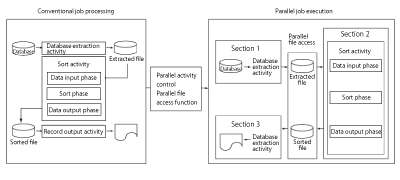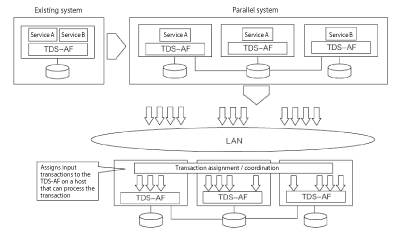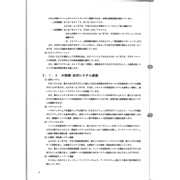ACOS-6/NVX PX (which stood for “parallel extended”) was an operating system designed for NEC’s large mainframes. NEC announced the operating system in March 1996 and started shipments in December 1996.
ACOS-6/NVX PX was an operating system for large and very-large mainframes that supported software resources from the previous large mainframe operating system ACOS-6/NVX while implementing parallel processing technology using the high-performance CMOS processors on the System PX7900, a Parallel ACOS mainframe that was released at the same time as the operating system. ACOS-6/NVX PX was installed on System PX7900 machines.
The main features of the operating system and its new architecture are given below.
- 1. Architecture features
- (1) Use of single-chip CMOS processors
- The symmetric multi-processing (SMP) structure, consisting of as many as eight memory-sharing CMOS processors, improved the system throughput by using parallel processing.
- (2) Base parallel-processing technology for the operating system
- The mechanism that assigned CPUs to jobs (parallel dispatching) maximized CPU cache efficiencies and minimized main memory access competition among processors.
- 2. Operating system features
- (1) Parallel batch function / parallel file access function
- The parallel batch function divided batch job steps that would normally be processed sequentially into job steps that could be processed in parallel and executed the job steps on multiple processors. When the job steps were completed, it combined the job steps’ processing results. The parallel file access function controlled the tracking of the input process position and output process position in a sequential file so that multiple job steps in a parallel process could execute inputs and outputs to the same sequential file.





